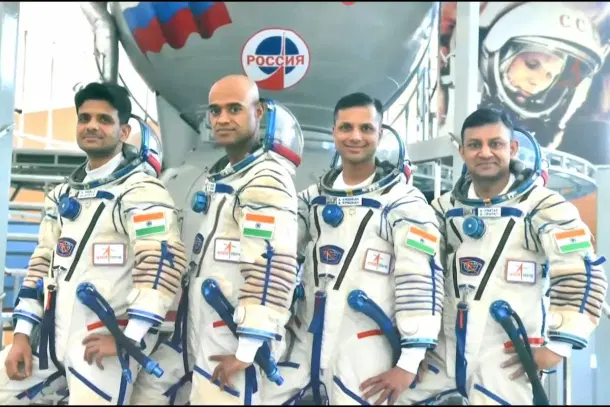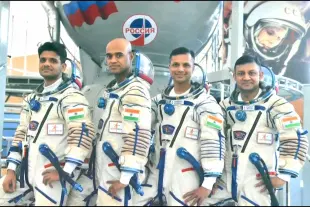News Brief
Gaganyaan Mission To Launch First Uncrewed Flight By End Of 2024; ISRO Aims For Safe Human Space Travel By 2026
Arjun Brij
Dec 10, 2024, 12:51 PM | Updated Dec 13, 2024, 05:56 PM IST
Save & read from anywhere!
Bookmark stories for easy access on any device or the Swarajya app.


Preparations for the maiden uncrewed flight under India’s ambitious Gaganyaan mission have gained momentum, with significant advancements in propulsion systems, crew escape mechanisms, and orbital module integration.
The first uncrewed mission is targeted for the end of 2024, followed by subsequent uncrewed missions in the third quarter of 2025 and the first quarter of 2026, according to Minister of State for Space, Dr Jitendra Singh, in a Parliament reply. The first crewed mission is expected in the fourth quarter of 2026.
“All propulsion systems of the human-rated launch vehicle have reached Sriharikota, and the crew escape system for the mission has also arrived at the launch complex,” Dr. Singh said. The astronauts have completed two of three semesters of training in India as part of their comprehensive preparation.
The Indian Space Research Organisation (ISRO) has completed the “human rating” of its LVM3 launch vehicle, incorporating redundancies to ensure safe human travel. This includes testing all three stages — solid, liquid, and cryogenic. Fluid mock-up filling trials of the cryogenic engine have also been successfully completed.
The Crew Escape System, designed to eject astronauts from the module in case of an emergency, was previously tested at a height of 17 km using a single-stage rocket. The system for the first unmanned flight is now ready and at the launch site.
The orbital module, comprising the crew module (to carry astronauts) and the service module (to provide support), is in the final stages of integration. Ground infrastructure, including the orbital module preparation facility and astronaut training facility, is operational.
The mission control center, responsible for the launch and operation, is nearing completion alongside the ground station networks for spacecraft tracking. ISRO has also partnered with the European Space Agency (ESA), signing a technical implementation plan for ground support during the mission.
Arjun Brij is an Editorial Associate at Swarajya. He tweets at @arjun_brij





